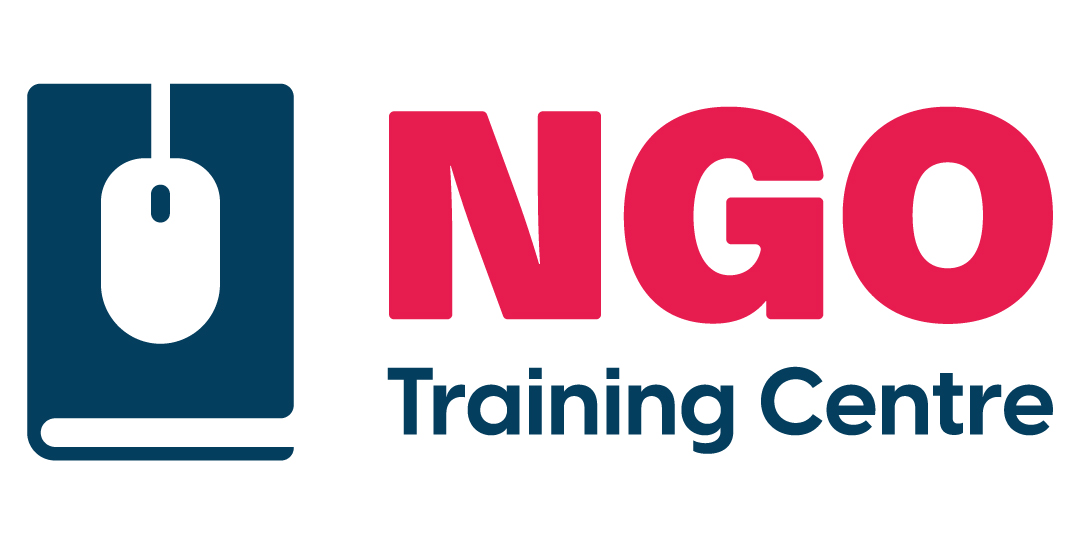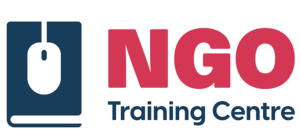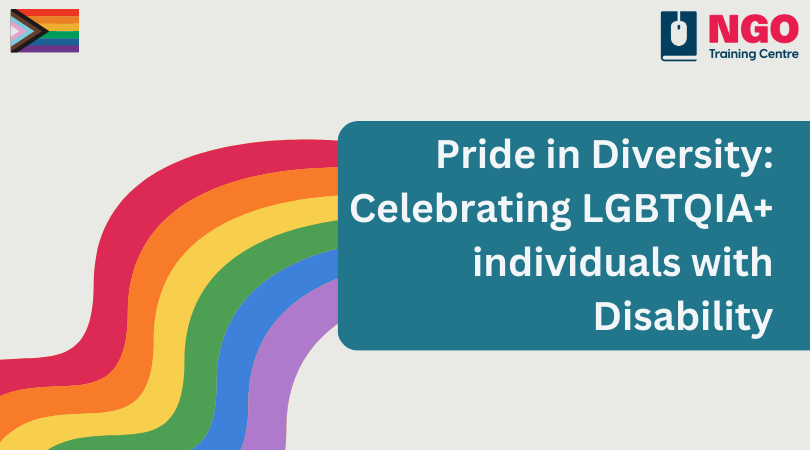
People with disability who identify within the LGBTQIA+ community face so many challenges, where the disadvantages stemming from their disability intersect with those related to their sexuality, gender, or identity.
Within the LGBTQIA+ community, there is a risk of reduced access to necessary support systems and a lack of advocacy for their rights. As a Disability Support Professional, understanding this intersectionality is crucial for effectively advocating and supporting the rights of all individuals with disabilities.
The absence of adequate support and services can result in isolation, vulnerability, bullying, and mental health issues. Even when services are available, the specific needs of LGBTQIA+ individuals with disabilities may be overlooked if these services are not inclusive, safe, and accessible.
For instance, LGBTQIA+ adults with intellectual disabilities residing in supported accommodation may struggle to express their sexual identity in non-inclusive settings due to preconceived assumptions and decisions made without their input.
Discrimination further silences individuals with disabilities who identify with diverse community groups, hindering their ability to express their views and preferences. LGBTQIA+ individuals with disabilities may rely on a limited network of supporters or caregivers who may not be aware of their sexual orientation, gender identity, or intersex status. Equally, they may openly identify as LGBTQIA+ but feel that their disability often hides this aspect of their identity.
For some LGBTQIA+ individuals with disabilities, disclosing their sexuality or identity may lead to loss of crucial family support for managing their disability and distancing from peers with similar disabilities. There may also be a lack of communication and understanding between disability service providers and the broader LGBTQIA+ community, leading to feelings of isolation and marginalisation within both communities.
While research on disability within the LGBTQIA+ community is inadequate, existing studies indicate:
- Individuals with disabilities may face a heightened risk of sexual abuse, including intimate partner violence, compared to the general population.
- Same-sex attracted, gender diverse, and intersex (SSAGDI) youth with disabilities may experience compromised sexual health due to inadequate sex education.
- SSAGDI youth with intellectual disability may feel overlooked if sexual health education is not inclusive.
- LGBTQIA+ individuals with disability are often assumed to be heterosexual or non-sexual.
Providing information and opportunities for LGBTQIA+ individuals with disabilities to explore and express their sexual orientation or gender identity can lead to positive health outcomes.
Some ways to achieve this expression could include:
- open conversation
- access to relevant literature
- engagement on social media platforms, and
- participation in supportive social groups,
All of these contribute to the overall well-being of LGBTQIA+ individuals with disabilities.
Here are Five other ways that you can help, by providing respectful and inclusive communication:
- Move beyond assumptions: Avoid assuming someone’s sexuality or gender identity based on stereotypes. Respect how individuals define themselves and ask about their preferences. Consult widely to ensure language reflects the diversity of the group.
- Acknowledge diversity: Recognize that LGBTIQA+ communities are diverse. Use language carefully, considering the intersections of identity, such as race, religion, gender, and sexual orientation.
- Respect privacy: Everyone has the right to privacy. Respect individuals’ choices about disclosing personal information regarding their gender or sexuality. Do not share personal information without explicit consent.
- Share your pronouns: Use correct pronouns to show respect and inclusion, and normalise the sharing of pronouns. Be open to wearing pronoun badges, introducing yourself with your pronouns, or adding them to your email signature.
- Learn from mistakes: Understand that mistakes happen, but strive to use respectful language. Acknowledge and correct mistakes promptly, avoiding dwelling on them. Repeated mistakes can be hurtful and may constitute bullying or discrimination.
We have included a definition guide below to help, too.
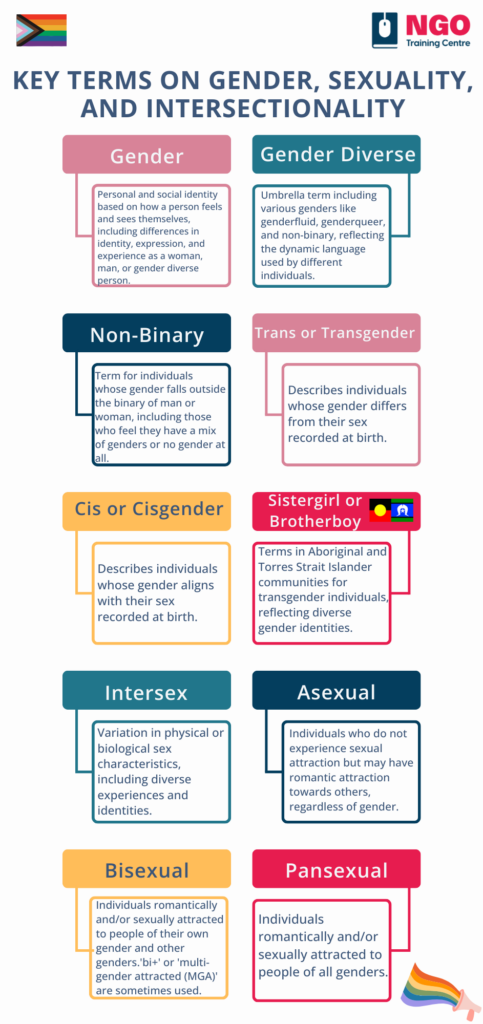
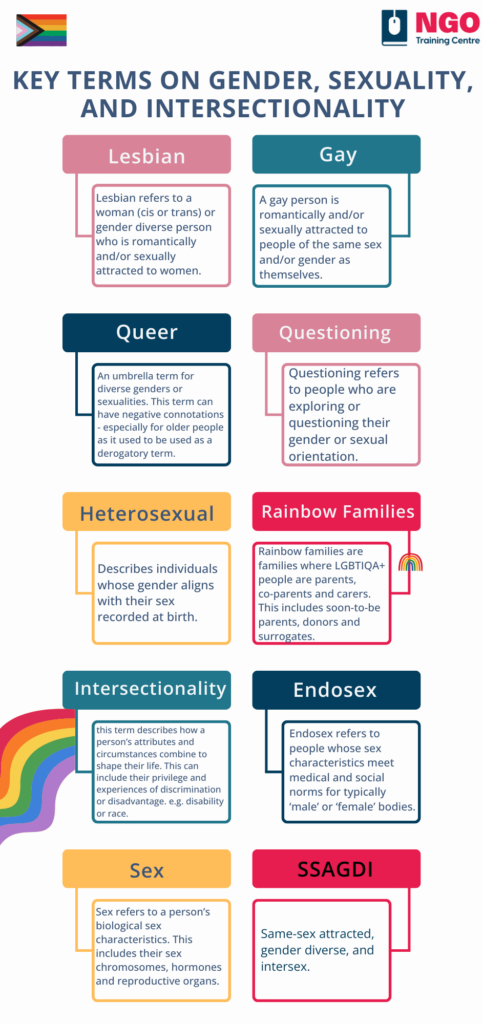
Are you looking for information and resources to assist a person you are supporting?
Visit: https://www.disabilitygateway.gov.au/gender-and-sexuality
References:
https://dacssa.org.au/diversity/lgbtiq/
https://www.vic.gov.au/inclusive-language-guide
Written by Amanda Robinson, B.A., MMentalHealth Prac.
Amanda is a professional with over a decade of dedicated experience in the fields of Mental Health and Disability. Her extensive expertise lies in navigating the intricate landscape of the Disability Sector. She brings a unique perspective to her work, being both a person with lived experience of disability and a compassionate carer. She has a passion for advocacy, making her a staunch champion for the rights and well-being of individuals facing similar challenges.


